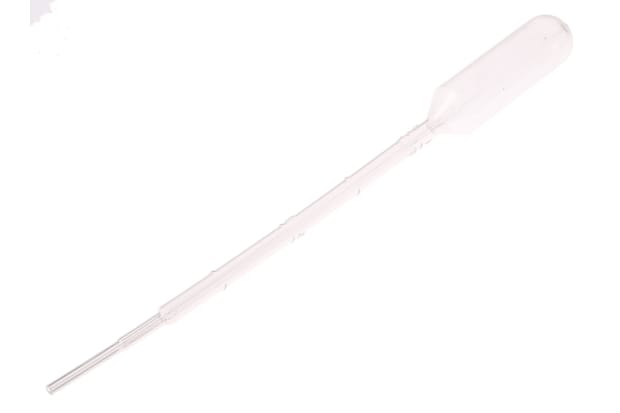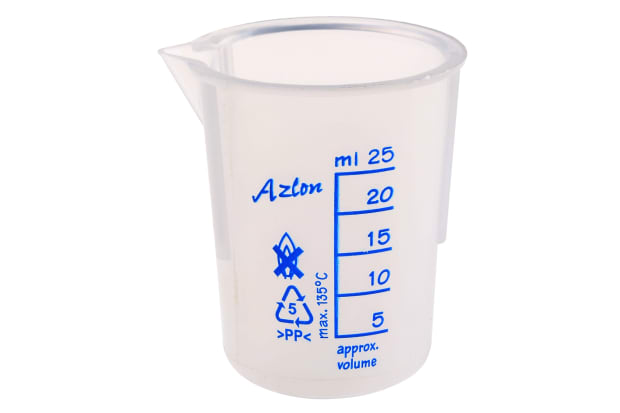- Published 8 Mar 2023
- Last Modified 29 Aug 2023
- 10 min
A Complete Pipette Guide
A guide to the different pipettes types, volumetric sizes, and how to use a pipette correctly.

Reviewed by Jay Proctor, Technical Support Engineer (December 2020)
What is a Pipette?
A simple pipette definition is as follows - it is a thin tube with a bulb, used for measuring precise quantities of liquid.
The pipet or pipette, meaning 'little pipe', has been used in various forms since the late 19th-century primarily to reduce contamination in the transfer of samples. However, it wasn’t until the 1950s that the modern version of the scientific pipette was patented.
Today, the majority of different pipette types work in a similar way, although the quantity of liquid and measurement accuracy varies between each type.
Many modern versions work by creating a partial vacuum above the chamber where the liquid is held. This vacuum is then selectively released to draw and dispense from the chamber into a container. They can be used with a range of liquids including everything from distilled water to reagents.
These instruments are now used by chemists, biologists, and medical experts all over the world. There are various types of pipettes, each offering different levels of precision. Understanding what is a volumetric pipette, what is a glass pipette, and what is a pasteur pipette, for example, may seem straightforward but each type has key differences and suitable applications.
Pipettes Types
There are many different types of pipettes, each with their own distinct features and most suitable applications. Some pipette types are ideal for more general use, whereas others are highly specialised for specific uses or industries.
Manual versions come complete with squeezable bulbs or pumps that draw the liquid into the tubing. Such devices are also found on semi-automatic or electronic models. Bear in mind that you should try to choose one with a maximum volume capacity that is closely matched to the quantity that you want to transfer.
Volumetric Pipettes
Volume pipettes allow for the measurement of a solution with a particularly high level of accuracy. Typically featuring a large bulb complete with a narrow long portion and single graduation mark, they are calibrated for a specific volume. Their highly accurate measurements are usually present in ml (millilitres).
Graduated Pipettes
The volume of a graduated pipette is marked in defined increments along the tubing. You can also be confident of precision when transferring liquid with this type. There must be a source of vacuum for the effective operation of the graduated pipette. They may come complete with either plastic or glass tubing and will feature a tapered tip. A small pipette is typically advised for the accurate measurement of small quantities. However, larger versions may be preferred where the level of accuracy is less important.
There are three types of graduated pipettes. Type 1 and type 3 feature a nominal value at the bottom (zero at the top). Type 1 also allows for the partial delivery of liquid in a range of volumes. Type 3 allows exclusively for transfer at the nominal value. The nominal value can be found at the bottom of the type 2 model, with the option of delivering the solution for any volume.
Specialist Pipettes
In addition to the different pipettes described above, there are also a number of specialist variations available for particular applications. Some examples include:
- Ostwald-Folin - These are particularly suitable for the measurement of viscous fluids, including whole blood. They are commonly found in medical laboratories
- Semi-Automatic - These enable the electronic transfer of fluid, minimising the need for manual labour involved with repetitive pipetting
- Van Slyke - These graduated pipettes have traditionally been used for medical applications. They feature serological pipettes for volumetric analysis
- Microfluidic Pipette - These recently developed models feature a localised flow zone at the tip and enable control of the nanoliter environment in front of the instrument
How to Use a Pipette
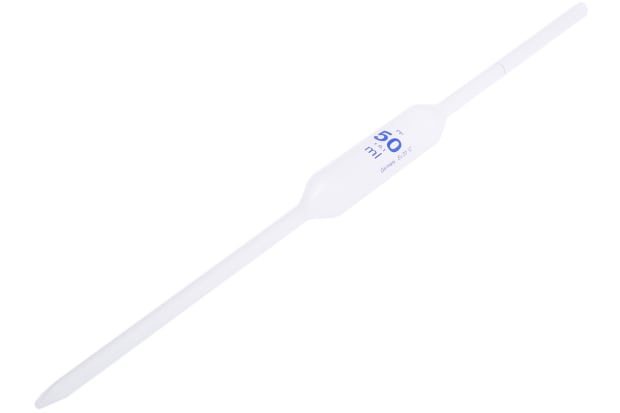
In their most basic form, you could compare the use of pipettes with a straw. It involves the creation of a pressure gradient and either pulling or pushing liquid. These instruments allow for the effective suction and movement of fluids.
Roller pumps and squeezy pumps are attached to glass or plastic tubes with a pipette tip to allow incremental measurement. Using a pipette is relatively straightforward but it is important that you know the scale to which liquid is measured in the pipette being used.
Learning how to use a bulb pipette and hold it properly is also key. It is quite common to hold them in a similar manner to a syringe. However, this pipette technique does not allow for the desired level of comfort or flexibility. Instead, you should take hold of the instrument with the lower guard positioned directly above your index finger.
How Accurate is a Pipette?
The accuracy of a pipette will depend largely on the type in question. The level of accuracy will be dependent on the degree to which the delivered volume matches with the volume specified on the instrument. The condition of equipment and use of pipetting technique will also have some impact on accuracy.
In the majority of instances, discrepancies in accuracy will be relatively minor and insignificant. However, you should be aware that there will be a risk of major inaccuracies when performing pipetting tasks such as the measuring of dilution for sensitive techniques such as HPLC.
The process of measuring pipetting accuracy is quite straightforward. Simply pipette the same volume of water ten times into a tared balance, keeping a record of the weight in each instance. You should then proceed to measure the relative standard deviation in the dispensed masses through the calculation of the standard deviation which will be expressed as a percentage of the average. This process should be repeated for a wider volume range for a true idea of measuring accuracy.
In terms of the different types, volumetric pipette accuracy is generally considered to be the best. They typically provide highly accurate measurements with only a tiny margin of error. Graduated pipette accuracy is usually also high but if accuracy is essential, a volumetric model will almost always be best.
You should be aware that there is a distinct difference between an accurate pipette and a precise one. The latter is specific to the closeness of different measurements to each other instead of a standard value. The mean volume should be the same as the set volume, with no variation between different pipetting.
How Do You Make a Pipette More Accurate?
The following methods may be used in order to increase the accuracy of a pipette:
- Check for any signs of damage prior to each use
- Clean following use
- Use a dedicated holder for vertical storage and the prevention of corrosion
- Follow the appropriate pipetting technique
- Pre-wet the tip of the pipette, removing any residue
- Use the reverse pipetting technique when working with viscous liquids or volatile solvents
- Use the largest volumes possible
How to Calibrate Pipettes
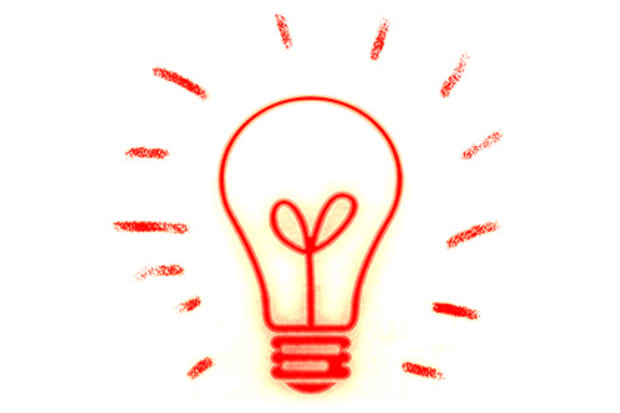
The calibration of a pipette is essential for ensuring an accurate and precise measurement. Calibrating pipettes essentially means measuring both the selected volume and the dispensed volume and judging the difference between the two amounts.
Depending on the frequency of use and the importance of precision, pipette calibration or adjustment may be required an average of every three to six months. However, you should also note that ambient factors such as temperature and humidity can affect results, as well as the type and what is being transferred.
Pipette Sizes and Measurement
The process for measuring pipettes will differ depending on the specific type and the amount that you are measuring. The graduated pipette is typically used for the measurement of volumes up to 50ml. A graduated cylinder is commonly used for the measurement of larger quantities. You may also use a micropipette for measuring small volumes.
A small pipette is often preferred over a large pipette to maintain greater precision - quantity permitting. This is why micropipettes are ideal for precise measurements of small volumes.
It may be necessary to calculate the measurement of volume with a basic graduated pipette. As an example, you might be required to draw 8ml of water into the instrument. You may then fill it to the zero line and dispense the water until the 8ml line is reached. However, this will result in an additional 2ml of water being present. If using a serological pipette, then you may insert a solution up to the 2ml point and dispense to the tip without any waste. Reference may also be made to a reverse scale for measuring convenience.
What is a Pipette Used for?
This content provides further detail and examines some common uses of the main types:
Type :
PE
Common Uses and Applications :
- Effective transfer and measurement of liquids with minimal risk of contamination
- Food and beverage production
Type :
PP
Common Uses and Applications :
- General-purpose scientific pipettes
- Lab pipettes for the creation of solutions
- Preparing solutions for titration
Type :
Volumetric
Common Uses and Applications :
- Applications where a particularly high level of accuracy is required
- Laboratory work as a chemistry pipette
Type :
Graduated
Common Uses and Applications :
- Applications where precision is key
- Smaller graduated pipette uses include accurately transferring liquids
Materials
Many of these instruments are traditionally made from glass. However, there has been an increase in the manufacture and use of plastic pipettes, which are particularly well suited to applications where a defined quantity of liquid isn’t required.
Modern pipette plastic is either polyethylene (PE) or polypropylene (PP), with the appropriate choice depending on factors such as the physical properties of the liquid and the volume that is to be transferred.
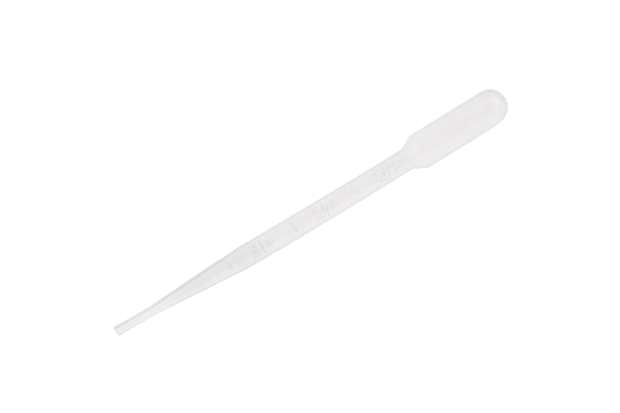
PE
PE versions have a range of benefits. The polyethylene tubing is highly flexible, lightweight, durable, and resistant to corrosion. This tubing variety also offers high levels of moisture protection and resistance to cracking and puncturing. It allows for the effective transfer of different liquid solutions. PE pipettes are commonly used in the production of food and beverages.
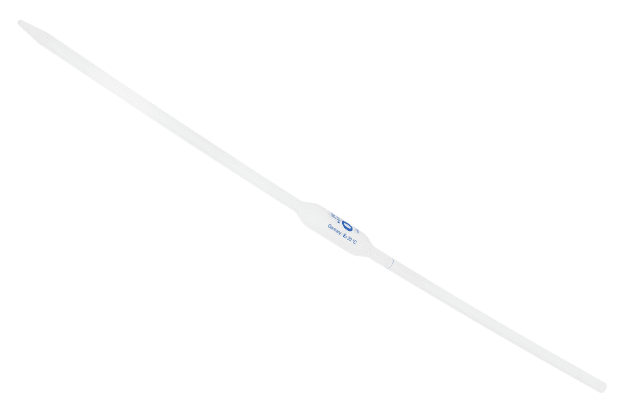
PP
Plastic pipettes featuring thermoplastic polypropylene (PP) are also commonly used. These have the advantages of being resistant to a range of diluted base and acidic chemicals. PP is also a relatively tough and durable variety of plastic.
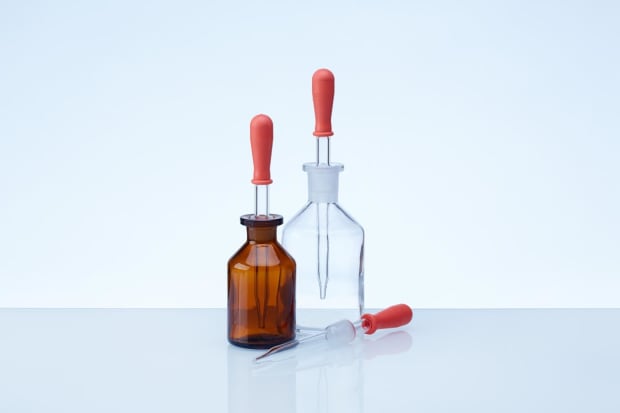
Glass
These are used for physical interaction with microscopic samples as necessary in the processes of microinjection and patch clamping. Pipette glass is commonly either borosilicate, aluminosilicate or quartz, with each being suitable for specific applications. Glass pipette accuracy will primarily depend on the specific model as well as the liquid being transferred.
FAQs
How Do You Stop Air Bubbles in a Pipette?
There will be a risk of air and bubbles being drawn in or dispensed into the wells if care isn’t taken. The build-up of bubbles can have a bearing on the optical density values and results. The reverse pipetting technique is recommended for the avoidance of such issues, particularly in relation to the transfer of highly viscous liquids such as 20% glycerol and blood serum.
The following steps should be followed for effective reverse pipetting:
- Push the plunger slightly past the first stop but not as far as the second stop
- Insert the pipette tip into the liquid and ensure the smooth transfer of liquid to the top
- Dispense the liquid to the first stop, leaving any residue in the tip
- Repeat the pipetting procedure or leave the residue in the tip for discarding as necessary
Where Can I Buy a Pipette?
RS Components has a wide range on offer. This includes a variety of different types, sizes, materials and capacities, providing greater flexibility when it comes to choosing the best product for your requirements.
Click through below to buy online or browse our wider range of lab equipment.
Where to Next?
Laboratory Equipment
From beakers to microscopes, explore our extensive lab equipment offering. Shop online with RS Components.
